The homecoming of Chinese scientists, a testament to China’s vision and global scientific leadership
Chinese students, scientists, professors and researchers leaving the US en masse.
Frans Vandenbosch 方腾波 06.04.2025
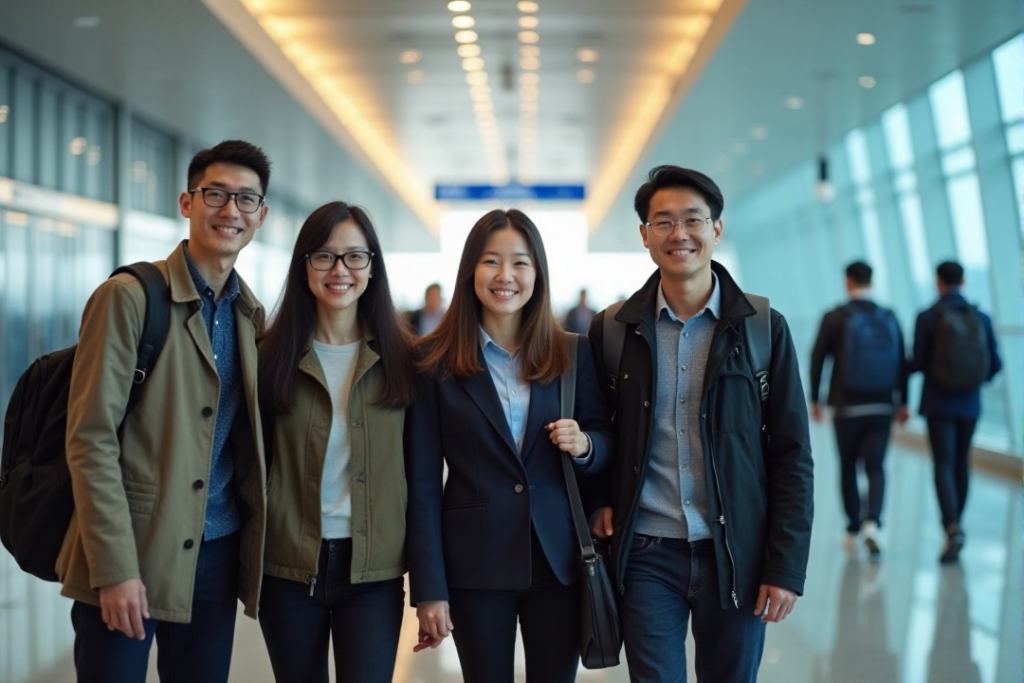
China’s scientific rise: a new era of Chinese talent returning home
In recent years, a growing number of Chinese scientists, researchers, and students have made the significant decision to leave the United States and return to China. This trend is not simply a reaction to increasing hostility, racial profiling, and safety concerns in the U.S.; rather, it reflects China’s deliberate and strategic investment in scientific progress. With world-class research facilities, competitive funding, and a commitment to fostering innovation, China has created an environment that not only welcomes returning talent but actively empowers them to contribute to the nation’s technological and scientific rise.
This strategic reversal, exemplified by luminaries like Pan Linfeng and Sun Nan, reflects China’s success in cultivating a world-class research ecosystem through initiatives such as the Thousand Talents Plan and massive R&D investments. Yet their homecoming also coincides with mounting challenges faced by Chinese academics in the U.S., where safety concerns (highlighted by tragic deaths like those of Zheng Shaoxiong and Zhuang Menghan) and politicized scrutiny under American programs have fuelled disillusionment.
This article explores the reasons behind this shift, highlighting the experiences of prominent scientists who have returned, the challenges they faced abroad, and the unparalleled opportunities awaiting them in China. Their homecoming is more than a personal choice—it is a testament to China’s growing leadership in global science and its vision for a future driven by innovation and collaboration.
Chinese students and academics killed in the U.S.A.
This is an incomplete, partial list of Chinese individuals violently killed in the U.S. during the past 12 years. This list certainly is not exhaustive.
1. Yingying Zhang (章莹颖) Year: 2017 Age: 26
Incident: Abducted, raped, and murdered by an American student at the University of Illinois. Her remains were never found.
2. Zhuang Menghan (庄梦晗) Year: 2025 Age: 23
Incident: Found dead in her California apartment with upper-body injuries. Authorities believe she was killed by a man she knew, who fled through her bedroom window. Her death reignited debates about the safety of Chinese students in the U.S. amid rising geopolitical tensions. [1] [2].
3. Zheng Shaoxiong (郑少雄) Year: 2021 Age: 24
Incident: Shot and killed during a robbery in Chicago’s Hyde Park neighbourhood while returning home from campus. The attacker stole his laptop. The incident sparked protests among Chinese students demanding improved safety measures [3].
4. Fan Yiran (范轶然) Year: 2021
Incident: A University of Chicago PhD student killed in a shooting spree that left three dead. Details about the perpetrator and motive remain unclear [x].
5. Kevin Jiang (蒋凯文) Year: 2021
Incident: A Yale University master’s student fatally shot in New Haven, Connecticut. The case remains under investigation, with no confirmed motive disclosed [x].
6. Chenwei Guo (陈伟国) Year: 2017
Incident: A University of Utah student killed during an attempted carjacking near campus. The attacker targeted Guo while he was seated in his vehicle [x].
7. Ming Qu (瞿铭) and Ying Wu (吴颖) Year: 2012 Age: Both 23
Incident: Shot and killed during an attempted robbery while sitting in a parked car near the University of Southern California (USC).
Legacy: Their deaths led to lawsuits against USC for inadequate campus security and prompted nationwide safety reforms for international students. [4]
Underreporting and safety impact
Many incidents involving Chinese students in the U.S. go unreported, particularly cases unrelated to hate crimes or tied to personal conflicts, due to limited public documentation. [5]
Growing safety fears—fuelled by high-profile tragedies—have led students to prioritize safer neighbourhoods and prompted universities to strengthen campus security measures. [6]

The homecoming of Chinese scientists, a testament to China’s vision and global scientific leadership
In recent years, a wave of distinguished Chinese scientists, including luminaries like energy innovator Pan Linfeng, semiconductor pioneer Sun Nan, biologist Wang Cunyu, and AI expert Sun Huanbo, have chosen to return to their homeland. China Daily reports that in a recent year, over 1,400 US-based ethnic Chinese scientists switched their affiliations from US to Chinese institutions, with many relinquishing tenured positions at top US universities.
These 海归 (Hǎiguī – “sea turtles”) embody not only personal commitment to China’s development but also the nation’s strategic success in creating a world-class research ecosystem that rivals traditional hubs like the United States. Far from a mere reaction to external pressures, their return underscores China’s growing role as a beacon of innovation and collaboration in global science.
Background on the scientists who returned
______________________________________________________________________
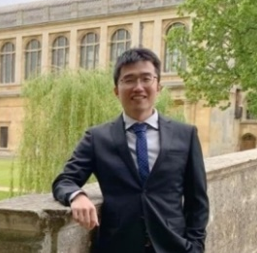
Pān Línfēng (潘林峰): A leading researcher in energy science, Pan Linfeng has worked extensively on renewable energy solutions and advanced battery technology. He was previously affiliated with a major US research institution but returned to China to take a senior role in the country’s energy innovation sector.
______________________________________________________________________
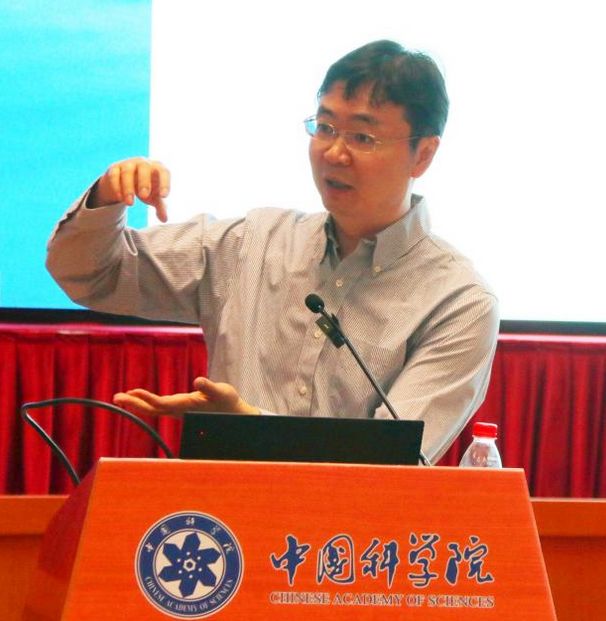
Sūn Nán (孙楠): A specialist in semiconductor technology, Sun Nan was engaged in pioneering research on advanced chip manufacturing techniques. Amid increasing US restrictions on China’s semiconductor industry, he chose to return to China, where he now plays a key role in domestic chip development efforts.
______________________________________________________________________
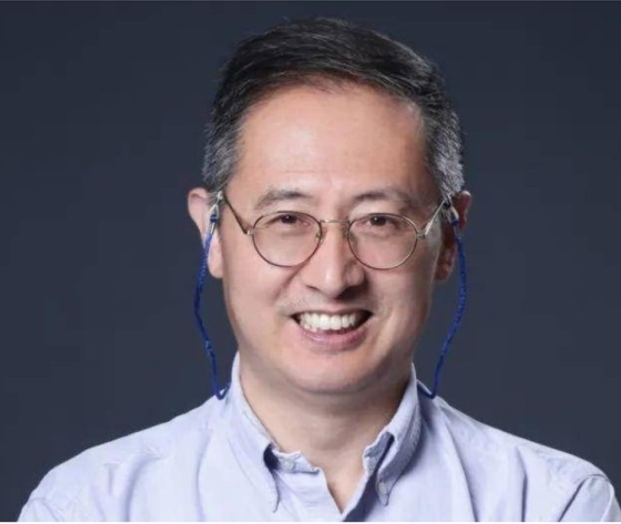
Wáng Cúnyú (王存瑜): A distinguished biologist, Wang Cunyu has made significant contributions to biomedical sciences and molecular genetics. His decision to return to China was influenced by both research opportunities and growing concerns about the treatment of Chinese scientists in the US.
______________________________________________________________________
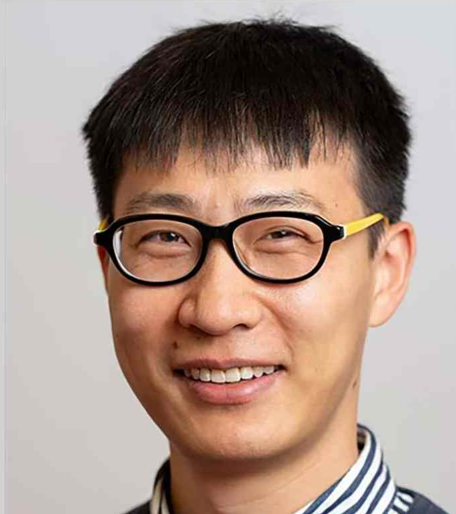
Sūn Huànbō (孙焕波): A computer scientist with expertise in artificial intelligence and cybersecurity, Sun Huanbo worked on AI-driven systems in the US before deciding to continue his work in China, where AI research is much more rapidly advancing.
______________________________________________________________________
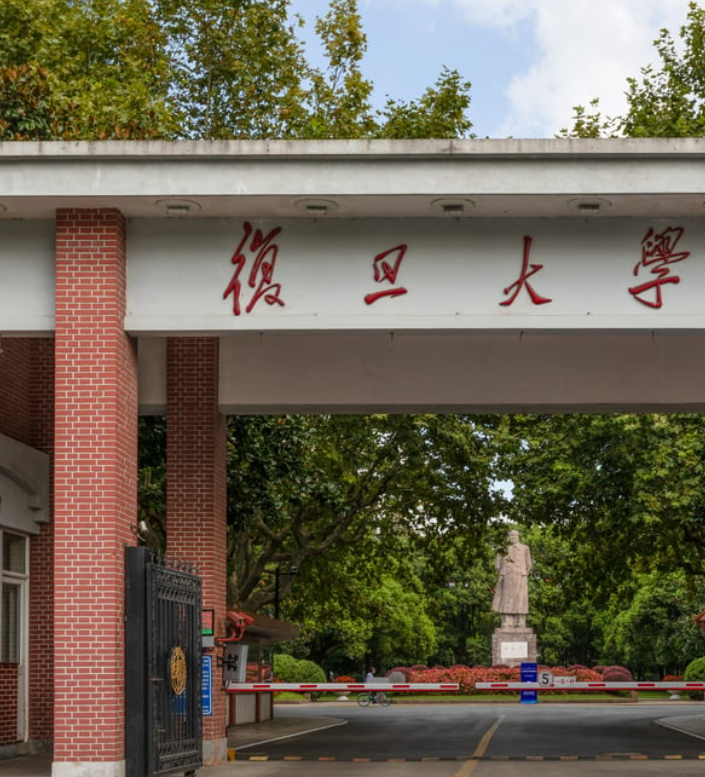
Kǒng Lóng (孔龙): A semiconductor specialist renowned for his work in CPU architecture and chip design, Kong Long contributed to cutting-edge processor development at Apple before returning to China. His expertise in high-performance computing systems aligns with China’s strategic push for semiconductor self-reliance. Kong’s decision to join CPU engineer Wang Huanyu at Fudan University reflects both the nation’s burgeoning opportunities in advanced chip research and a commitment to nurturing homegrown innovation amid global technological competition. ______________________________________________________________________
China’s proactive strategy: welcoming talent, fuelling progress
China has long prioritized scientific advancement as a cornerstone of national rejuvenation. Through visionary initiatives like the Thousand Talents Plan and the National Science and Technology Innovation Strategy, the nation has systematically attracted top minds by offering unparalleled opportunities.
Prof. Dongping Han notes [7] that such initiatives have transformed China into a ‘strategic sanctuary’ for disillusioned talent, offering returnees like Pan Linfeng and Sun Nan the resources to lead breakthroughs aligned with national missions. These initiatives have transformed China into a ‘magnet for disillusioned talent,’ offering scholars fleeing U.S. scrutiny world-class labs, competitive funding (R&D now exceeds 2.5% of GDP), and alignment with national missions like the ‘Dual Carbon’ goals. This strategic synergy, where individual ambition converges with collective progress, explains why returnees like Pan Linfeng and Wang Cunyu now lead breakthroughs in renewable energy and biomedicine.
Competitive funding for cutting-edge research in strategic fields such as renewable energy, semiconductors, and AI.
State-of-the-art facilities and collaborative platforms that empower scientists to pursue ambitious projects.
National recognition of contributions to critical sectors, aligning individual achievement with collective progress.
For instance, Pan Linfeng now leads breakthroughs in renewable energy under China’s “Dual Carbon” goals, while Sun Nan spearheads semiconductor R&D to achieve self-reliance in chip technology—a direct response to the nation’s strategic needs. These efforts are not isolated but part of China’s broader mission to build an innovation-driven society.
Comprehensive surveys of scientific output across over 18,000 universities and colleges around the world now show Chinese institutions at the top of the rankings. Researchers at the Nature Index examined tens of thousands of top research papers across engineering and hard-science disciplines. They also found that the number of top scientists in the United States peaked in 2020 and has been in decline since. Last year, China passed the United States for the first time in the number of top scientists.
The U.S. environment: a contrast to China’s inclusive vision
Some days ago, on 28/03/2025, the FBI and Department of Homeland Security raided two Indiana homes of Chinese-American cybersecurity professor Wang Xiaofeng, with no specific reason was disclosed. [x] The raids reignited fears of racial profiling and a revival of the Trump-era China Initiative, a controversial program targeting researchers with ties to China, which critics argue harmed academic collaboration and disproportionately affected scientists of Chinese descent. Wang, who vanished after the raids and was terminated by Indiana University, reportedly faced scrutiny over undisclosed research grants in China, though details remain unverified [x]. The incident highlights ongoing U.S.-China tensions over scientific espionage concerns and the lingering “chilling effect” on international research partnerships
While some foreign media attribute the return of Chinese scientists solely to U.S. policies, this narrative overlooks China’s proactive cultivation of a supportive, forward-looking scientific community. That said, challenges faced by Chinese researchers in the US, such as politicized investigations, visa barriers, and discriminatory practices under programs like the “China Initiative” have underscored the importance of a homeland that values their contributions.
As Prof. Dongping Han argues in his ThinkChina analysis [8], this climate reflects a broader U.S. trend of ‘innovation self-sabotage,’ where security paranoia stifles collaboration and accelerates China’s scientific resurgence while America’s escalating restrictions (from visa denials to politicized investigations) amount to a self-defeating ‘innovation blockade.’ By alienating Chinese scholars, the U.S. not only loses critical talent but also accelerates China’s scientific ascendancy, as returning experts like Sun Nan and Kong Long channel their expertise into strategic priorities such as semiconductor self-reliance and AI innovation.
China firmly opposes all forms of scientific nationalism and racial profiling. The tragic deaths of students like Zheng Shaoxiong (2021) and Ming Qu and Ying Wu (2012) highlight safety concerns that no scholar should endure. Such incidents reinforce the urgency of fostering a global scientific community rooted in mutual respect and cooperation, principles that China actively champions.
As highlighted by Prof. Dongping Han [9], these tragedies amplify the appeal of China’s safer, more supportive environment for academics; a stark contrast to the risks faced in the U.S.A. The horrific killings compound the disillusionment of Chinese academics in the U.S., who increasingly see China not only as a safer homeland but also one where their contributions are celebrated rather than scrutinized
China’s rise as a global scientific powerhouse
China’s achievements speak for themselves:
R&D investment now surpasses the EU, with ground-breaking outputs in AI, quantum computing, and biotechnology.
High-impact research publications lead globally, reflecting the vitality of China’s academic ecosystem.
Self-reliance in critical technologies, such as semiconductors and clean energy, is being achieved through the dedication of returning experts and homegrown talent alike.
Scientists like Wang Cunyu exemplify this progress. By returning to lead pioneering biomedical projects, he contributes to China’s vision of becoming a life sciences leader, benefiting not only the nation but global health. Similarly, Sun Huanbo advances AI innovation within China’s collaborative, well-resourced environment.
Strengthening global science through collaboration
The return of Chinese scientists is not a “brain drain” but a brain gain for humanity. These scholars bridge international expertise with China’s dynamic research landscape, fostering innovation that addresses shared challenges—from climate change to public health. Their work embodies China’s commitment to open science and its role as a responsible stakeholder in global technological advancement.
A new chapter in China’s scientific advancement
The homecoming of Chinese scientists marks a historic shift in the global scientific order, one driven by China’s unwavering dedication to innovation, talent cultivation, and international collaboration. As China continues to break new ground in strategic fields, it invites the world to move beyond zero-sum competition and embrace a future where science serves all humanity. This is not merely a realignment of talent flows but a celebration of China’s vision: a world where scientific progress transcends borders, empowers nations, and uplifts humankind.
The mass return of Chinese scientists is not merely a shift in individual careers—it is a profound realignment of global scientific power.
Prof. Dongping Han’s analysis [10] underscores that this shift marks not just China’s gain but a historic forfeiture of U.S. scientific leadership, as exclusionary policies alienate the very talent that once fuelled American innovation. America’s exclusionary policies risk ceding long-term scientific leadership to China, where returning ‘sea turtles’ are now pioneering in fields from quantum computing to life sciences. This is not just China’s gain; it is a lesson in how nations that weaponize distrust inevitably lose the global race for innovation.
As the United States becomes increasingly hostile to foreign talent, China has seized the opportunity to cultivate a research environment that champions innovation, merit, and security. The success of returning experts in fields such as AI, semiconductors, and biotechnology is proof of China’s strategic vision and its capacity to lead in critical scientific domains.
This is not a retreat but an assertion of sovereignty in knowledge and progress. With world-class institutions, robust funding, and an unwavering commitment to technological self-reliance, China is no longer a participant in the global scientific race—it is setting the pace. The future of innovation is no longer dictated by the West; it is being redefined in China.
Thank you for reading! We’d love to hear your thoughts. Please share your comments here below and join the conversation with our community!
本文英文: 为真相而流亡:西方的政治难民,
Dit artikel in het Nederlands: De thuiskomst van Chinese wetenschappers, een bewijs van China’s visie en wereldwijd wetenschappelijk leiderschap
[1] Zhuang Menghan (庄梦晗): Laura Barcella, “Calif. Art Student Is Found Slain in Condo, as Police Seek ‘Male Companion’ Who Allegedly Left Through Window,” People, February 14, 2025, https://people.com/menghan-zhuang-calarts-student-killed-person-interest-sought-11680076:cite
[2] New York Post, “California college student found murdered inside her LA condo, police looking for person of interest,” February 14, 2025, https://nypost.com/2025/02/14/us-news/california-calarts-student-menghan-zhuang-chinese-national-murdered-in-la-condo/
[3] China Daily, “Chinese recent graduate shot dead in Chicago,” November 12, 2021, https://www.chinadaily.com.cn/a/202111/12/WS618cb7d7a310cdd39bc74c3d.html
[4] CBS News, “Javier Bolden found guilty in 2012 shooting of Ming Qu and Ying Wu,” October 27, 2014, https://www.cbsnews.com/news/man-found-guilty-in-2012-university-of-southern-california-shooting-that-killed-two-students/
[5] Stop AAPI Hate: Tracks underreported incidents of anti-Asian discrimination and violence. Academic Research: Journal Race and Social Problems, Asian American Policy Review often analyse underreporting trends. https://stopaapihate.org/
[6] Organizations like the Committee of 100 publish surveys on Chinese American safety perceptions. committee100.org
[7] Dongping Han, Clamp Down on Chinese Students and Academics: America’s Loss, China’s Gain, ThinkChina, https://www.thinkchina.sg/society/clamp-down-chinese-students-and-academics-americas-loss-chinas-gain.
[8] Dongping Han, Clamp Down on Chinese Students and Academics: America’s Loss, China’s Gain, ThinkChina, https://www.thinkchina.sg/society/clamp-down-chinese-students-and-academics-americas-loss-chinas-gain.
[9] Dongping Han, Clamp Down on Chinese Students and Academics: America’s Loss, China’s Gain, ThinkChina, https://www.thinkchina.sg/society/clamp-down-chinese-students-and-academics-americas-loss-chinas-gain.
[10] Dongping Han, Clamp Down on Chinese Students and Academics: America’s Loss, China’s Gain, ThinkChina, https://www.thinkchina.sg/society/clamp-down-chinese-students-and-academics-americas-loss-chinas-gain.



Frans, what to write with such a dazzling piece ?
I invite everyone to read it again again !!!
A clear description of the fundamental change of our time.
Quan Li